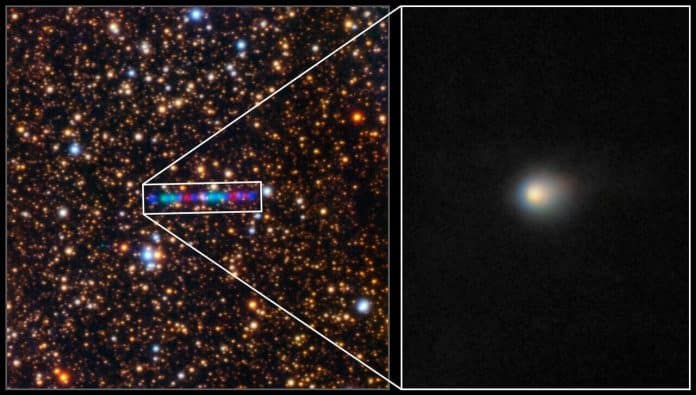Santiago, Chile – As the interstellar comet 3I/ATLAS streaks through our solar system, it is undergoing a jaw-dropping chemical shift — nickel gas giving way to iron — in real time. But in a twist that reads like science fiction, NASA is effectively sidelined, hamstrung by the U.S. government shutdown.
European observatories, especially the Very Large Telescope (VLT) using the UVES spectrograph, are capturing the drama. Scientists have observed nickel (“Ni I”) emission lines at all distances from 3.14 to 2.14 astronomical units (AU), but iron (Fe I) lines only appear once the comet crosses ~2.64 AU. That sudden metal flip has never been seen before in a comet — and may never be again.
What’s causing the shift? Leading theory: ancient molecules called metal carbonyls (Ni(CO)₄ and Fe(CO)₅) stored in the comet’s ice. As sunlight heats the comet, nickel’s carbonyl vaporizes first. At closer range, iron carbonyl kicks in — the ratio between nickel and iron plunges.
This is a once-in-a-lifetime chance to observe how a comet’s chemistry evolves under solar influence. But in the U.S., the government shutdown has put NASA’s instruments, missions, and funding on pause. American scientists are largely cut out of this cosmic moment — even as 3I/ATLAS carries clues to how planetary systems form.
Meanwhile, European teams are racing against time. Each spectrum, each metal measurement, could rewrite our understanding of comets and interstellar chemistry. When 3I/ATLAS slips back into the deep dark, a window may close forever — and with it, some of humanity’s best cosmic secrets.
This article was produced by a journalist and may include AI-assisted input. All content is reviewed for accuracy and fairness.
Follow us on Instagram & Facebook for more relevant news stories and SUPPORT LOCAL INDEPENDENT NEWS! Have a tip? Message us!





